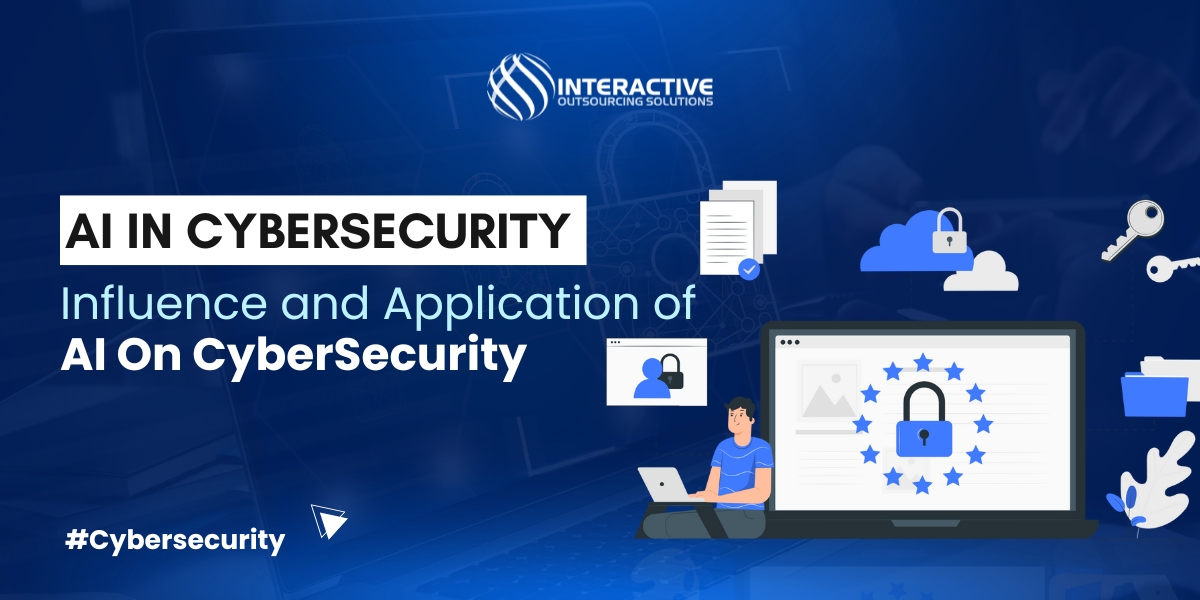Artificial Intelligence (AI) encompasses the utilization of sophisticated algorithms and machine learning methodologies to improve the identification, mitigation, and reaction to cyber threats. AI enables cybersecurity frameworks to process extensive datasets, recognize trends, and execute informed decisions at velocities and magnitudes that surpass human abilities.
The integration of AI in cybersecurity transforms the landscape of threat detection, streamlines response mechanisms, and fortifies vulnerability management. Through the analysis of behavioral patterns, identification of phishing attempts, and adaptation to emerging threats, AI significantly improves cybersecurity strategies, facilitating proactive defense measures and the protection of sensitive information.
Application of AI in preventing cyber terrorism
AI In Cybersecurity threat intelligence represents a versatile and adaptive technology that leverages data collection and analysis derived from historical threats to prevent and mitigate cyber attacks on the designated network.
Artificial intelligence in cybersecurity enhances cyber threat intelligence, allowing security experts to:
- Investigate the traits of cyberattacks
- Fortify their protective measures
- Examine data—including fingerprints, typing patterns, and voice signatures—to verify user identities
- Uncover evidence regarding the identities of particular cybercriminals.
AI Powered vulnerability scan
Mitigating vulnerabilities in software is of paramount importance. The integration of AI assistants within code editors, build pipelines, and testing or validation tools for operational systems is rapidly becoming standard practice across various sectors of information technology.
Similar to Cyber Threat Intelligence (CTI), AI systems can significantly reduce the burden of repetitive tasks, allowing human resources to focus on more impactful projects and innovations. Although code reviews are essential, they can be enhanced through the application of Static Application Security Testing (SAST). Despite the long-standing presence of SAST platforms, a major challenge remains the high volume of false positives they often produce. This is where AI and machine learning can provide a more nuanced analysis of source code, as well as infrastructure and configuration code. Additionally, AI is increasingly being utilized to conduct Dynamic Application Security Testing (DAST), assessing live applications to determine the effectiveness of common attack vectors.
AI In Cybersecurity for Risk Prediction
Researchers utilize data gathered from prior attacks, in conjunction with malware samples obtained during investigations at client locations and well-known cybercrime forums, to develop models that closely replicate real-world scenarios. This approach also enables them to identify anomalies that might be overlooked by human analysts. By employing tools such as honeypot infrastructure, along with logs supplied by clients and historical data amassed over time through collective intelligence platforms, researchers can construct models using machine learning techniques, including clustering algorithms.
The Future of AI in Cybersecurity
The role of artificial intelligence in cybersecurity is becoming increasingly essential in combating sophisticated cyber threats. As AI continuously learns from the data it encounters, the development of new technologies based on AI methodologies is vital for detecting emerging threats and swiftly preventing hackers from taking advantage of newly discovered vulnerabilities.
AI In Cybersecurity for Cyber Risk Management
Integrating AI into cybersecurity brings a ton of advantages for organizations aiming to tackle their risks. Here are some key perks:
Continuous learning: AI keeps getting better as it learns from fresh data. With techniques like deep learning and machine learning, AI cybersecurity tools can spot patterns, set a standard for normal activity, and flag anything unusual or suspicious. This ongoing learning makes it tougher for hackers to breach an organization’s defenses.
Identifying unknown threats: As cybercriminals come up with more advanced attack methods, organizations face risks from unknown threats that could wreak havoc on their networks. AI In Cybersecurity helps by mapping out and preventing these unknown threats, including vulnerabilities that haven’t been discovered or fixed by software vendors yet.
Handling massive data: Cybersecurity AI systems can process and make sense of huge amounts of data that security teams might struggle with. This means organizations can automatically uncover new threats hidden in large volumes of data and network traffic that traditional systems might miss.
Better vulnerability management: Beyond just finding new threats, AI helps organizations manage vulnerabilities more effectively. It allows for better system assessments, enhances problem-solving, and leads to smarter decision-making. Plus, it can pinpoint weak spots in networks and systems, ensuring that organizations stay focused on the most critical security tasks.
Stronger overall security: Juggling the risks from various threats like denial-of-service (DoS) attacks, phishing, and ransomware can be a real challenge. But with cybersecurity AI, organizations can detect different types of attacks in real-time, allowing them to prioritize and mitigate risks more efficiently.
Conclusion
As we learn more about AI cybersecurity systems, the speed, and precision of machine learning in securing our tech will shift from being a “nice to have” to an absolute “must have.” It’s pretty much a given that cybercriminals will use AI and ML to launch their attacks, so it’s crucial for defenders to adopt these technologies to safeguard their organizations and systems.
Ideally, students preparing to join the workforce should get familiar with AI and ML, but seasoned professionals need to get on board too. The best move for individuals is to grasp at least the basics of AI, while organizations should start exploring how to effectively integrate AI and ML into their products, systems, and security measures.






